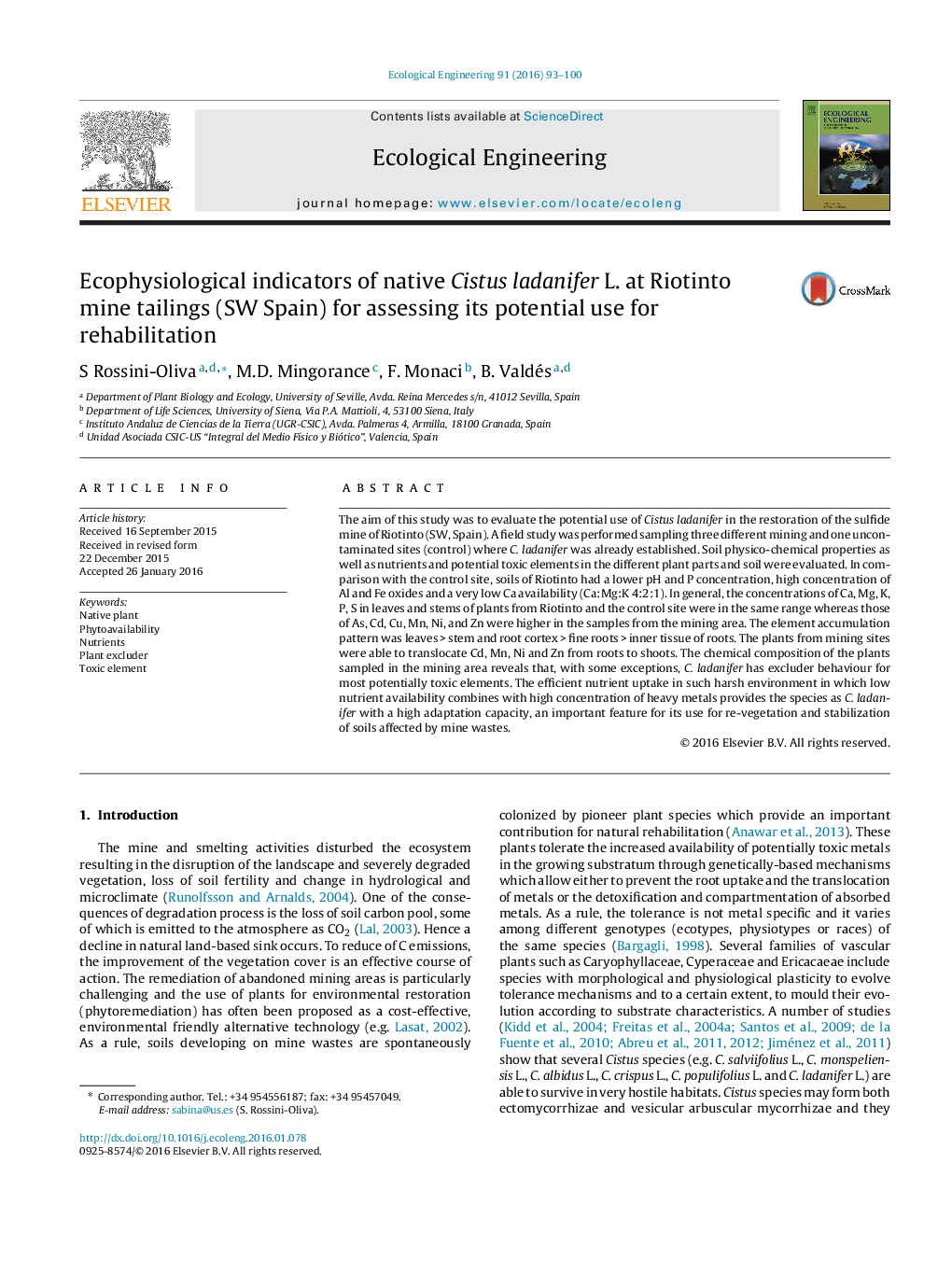| Article ID | Journal | Published Year | Pages | File Type |
|---|---|---|---|---|
| 6301287 | Ecological Engineering | 2016 | 8 Pages |
Abstract
The aim of this study was to evaluate the potential use of Cistus ladanifer in the restoration of the sulfide mine of Riotinto (SW, Spain). A field study was performed sampling three different mining and one uncontaminated sites (control) where C. ladanifer was already established. Soil physico-chemical properties as well as nutrients and potential toxic elements in the different plant parts and soil were evaluated. In comparison with the control site, soils of Riotinto had a lower pH and P concentration, high concentration of Al and Fe oxides and a very low Ca availability (Ca:Mg:K 4:2:1). In general, the concentrations of Ca, Mg, K, P, S in leaves and stems of plants from Riotinto and the control site were in the same range whereas those of As, Cd, Cu, Mn, Ni, and Zn were higher in the samples from the mining area. The element accumulation pattern was leaves > stem and root cortex > fine roots > inner tissue of roots. The plants from mining sites were able to translocate Cd, Mn, Ni and Zn from roots to shoots. The chemical composition of the plants sampled in the mining area reveals that, with some exceptions, C. ladanifer has excluder behaviour for most potentially toxic elements. The efficient nutrient uptake in such harsh environment in which low nutrient availability combines with high concentration of heavy metals provides the species as C. ladanifer with a high adaptation capacity, an important feature for its use for re-vegetation and stabilization of soils affected by mine wastes.
Related Topics
Life Sciences
Agricultural and Biological Sciences
Ecology, Evolution, Behavior and Systematics
Authors
S Rossini-Oliva, M.D. Mingorance, F. Monaci, B. Valdés,
